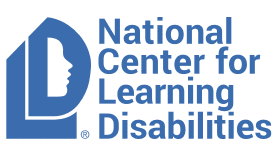COVID-19 Education Equity Guide: School Funding
Research shows that increased school spending leads to higher graduation rates, higher wages, and a reduction in adult poverty, especially for students from low-income backgrounds. As public schools brace for increased expenses and an unprecedented projected loss of revenue due to the coronavirus pandemic, state leaders are grappling with difficult decisions about how to balance their budgets. While the federal government has provided some stabilization funding to help schools weather the current crisis, we know that it’s a fraction of what’s needed to shore up education budgets. State leaders should work to protect education budgets, which have barely recovered from the last recession. But that won’t be possible in all states.
Unless legislative leaders take a strategic approach to allocating resources and cutting costs, the highest-poverty / lowest-wealth districts are likely to be hit hardest since they are more dependent on state revenue. If state leaders must cut education budgets, they should do it in a way that protects the districts with the most student need and least amount of local wealth.
EQUITY PRINCIPLE: Every student — including students of color, students from low-income backgrounds, English learners, students with disabilities, and students experiencing homelessness — attends school in a state that allocates funding to districts based on the needs of its students, by way of a flexible and transparent funding system.
EQUITY ACTIONS:
- Protect education budgets by maintaining all state spending on K-12 education. If that is not possible, do not cut spending on education more than spending on other sectors of state government (e.g., transportation or law enforcement).
- Avoid exacerbating revenue shortfalls by not cutting taxes or otherwise reducing revenue that supports education.
- Raise additional revenue by asking the state’s wealthiest households and businesses to contribute their fair share.
- When making cuts in state funding to school districts, shield high-poverty/low-wealth districts to the greatest extent possible. For example, protect funding streams that support vulnerable students and allocate cuts so that they are lowest in high-need districts on a per-pupil basis. These approaches could prevent high-need districts across the country from losing billions of dollars, while still allowing state leaders to balance their budgets.
- Require districts to shield the highest-need schools from any necessary cuts in resources (funding, staff, and programming) and offer guidance for how district leaders can approach cuts in ways that shield the most vulnerable students.
- Target federal stabilization funding to support the highest-need schools by ensuring that districts allocate funds to the schools with the greatest needs and requiring districts to submit an equity-centered plan, based on community and family feedback from historically marginalized families and those most deeply impacted by the pandemic.
- Report school-level spending data in clear and accessible ways, including comparative spending data and contextual information that go beyond the minimum requirements under the Every Student Succeeds Act, to enable district leaders, community members, and other stakeholders to assess how COVID-19 impacts spending and analyze how equitable spending is.
States Prioritize Education and Equity in Balancing Budgets
Recognizing the importance of education and the need for early budget actions to allow for planning, state leaders in Pennsylvania passed a budget that protects education funding at last year’s levels – at least through the middle of 2021.
Although Ohio Gov. Mike DeWine chose to reduce funding for K-12 education by $300 million, his administration took an approach that prioritized equity, with the more affluent districts taking larger cuts per student than districts with less local wealth.





